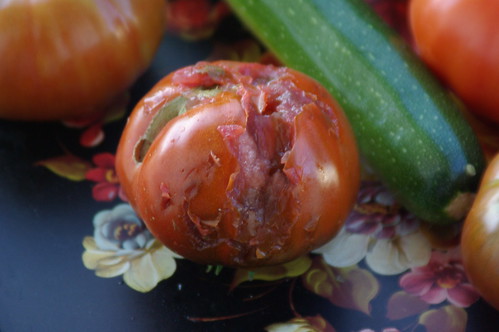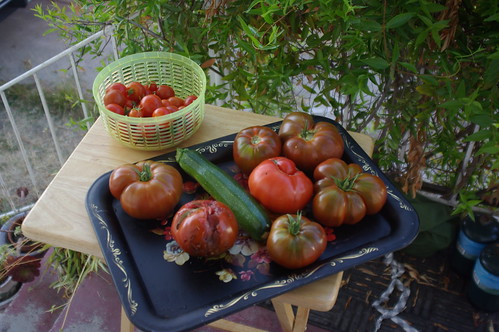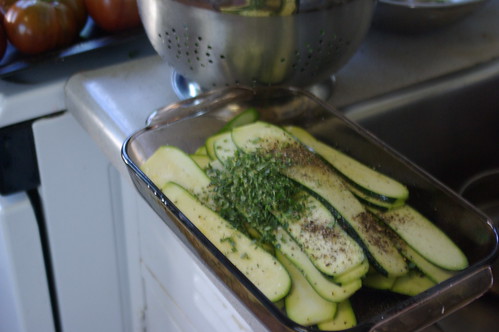OUCH! What do you do if you have a burn or a cut? Pull out the bandages and the Neosporin or bactromycin?
Well, that's what I used to do. I have had some pretty bad accidents and putting antibiotic ointment on scraps, burns and cuts was the "best" way to protect and heal such injuries.
Thursday, I burned the heck out of my arm on a very hot baking sheet. It's about 3" long and looks ugly -- no blisters, but the whole area around the 3/4" wide burn is very swollen. I put a gauze pad with some antibiotic ointment on it and wrapped it with a bandana (lacking bandage tape). After soaking in hot springs all weekend, I thought I should at least cover it up at work to protect it and realized all my ointment tubes (purchased in 2002 when I had a big skating accident) had expired years ago. So, I tossed them and went to Walgreen's to find bigger bandages and more ointment.
I must say - I was pretty shocked when I read the box and discovered that every single antibiotic ointment is based in petroleum jelly or "petrolatum." Not having many options at Walgreen's, I bought a Walgreen's triple antibiotic ointment tube and some Walgreen's waterproof bandages big enough to cover the burn.
After applying the ointment to the bandage and positioning it over my arm, I noticed some interesting reactions. About 20 minutes after applying the ointment, I felt like there were small hot stones under my hand and side of my arm. The skin didn't feel hot to the touch but something was happening. Less than 3 hours later, I had to yank the bandage because for almost 2 hours, it was killing me -- the adhesive was itching like crazy.
I shudder to think about the process of making adhesive, waterproof bandages -- I really do like the Nexcare bandages, they seem to work pretty well with my skin. I so rarely need to use bandages these days and it begs the questions:
What are the options? Why is petroleum jelly used in a product like this? Is it really safe to use?
ORIGIN & HISTORY OF PETROLEUM JELLY: According to
Wikipedia, petroleum jelly was first discovered by workers on the country's first oil rigs as a buildup on the equipment -- but they discovered then it was applied to cuts and burns, it seemed to speed healing. Then, a young chemist patented the process of making petroleum jelly through vacuum distillation and filtration of the still residue through bone char.
Petroleum jelly is hydrophobic -- meaning it repels water -- and it should not be used on fresh burns because it traps the heat inside and can make the burns worse. During WWII, a type of petroleum jelly called "dark red veterinary petroleum jelly" was used in life raft survival kits to prevent sunburn because it nearly perfectly blocks UV rays. Vaseline is often used as a personal lubricant but it can dissolve latex condoms so is not recommended (other oils also break down latex, so you should use water based lubricants anyway).
COMMON USES: Vaseline is a pretty well known household name. Even I have had the same small container of it for 14 years -- I think I bought it while I was in Mexico and used it for protecting my boots. Come to think of it, it'll be the perfect lubrication for my small juice press. Lots of people use Vaseline for dry skin and for makeup removal. Petroleum jelly, or petrolatum, is used in a lot of cosmetics (lip balm, lip gloss, and ointments. The grade used is considered harmless but there are less refined grades which contain
carcinogens.
Mineral oil is also made from petroleum and has a lot of effects on the skin and body which are the opposite of what you would expect. A website called "
Skin Suicide" describes that mineral oil, as a petroleum product, "cannot be absorbed by the body. It "seals" the skin, clogs pores, attracts dirt and pulls essential trace minerals from the skin. It must be removed with harsh alcohol." Other sources note that cosmetic grade mineral oil is noncomedogenic but YMMV.
IS IT HEALTHY? Information on the safety of this ubiquitous product is hard to find. Even the Environmental Working Group's
Cosmetic Safety Database entry for petrolatum is incomplete, though it is listed as a
low risk ingredient.
It mentions possible contamination with
PAHS but no real details there, either. There have been
876 studies listed in PubMed on petrolatum use -- that's a lot to wade through!
I also found this really lengthy
debate about the safety and efficacy of petroleum jelly and mineral oil on a LJ forum.
My takeaways:
- petrolatum is a petroleum product - there are many reasons to avoid purchasing petrochemicals that are easy to identify
- petrolatum doesn't moisturize - it acts as a barrier to moisture and actually can dry out your skin
- petrolatum doesn't heal -- it can protect (ie, preventing blisters in humid/hot environments) but it is a barrier, not a healing agent
My recommendations are:
- tea tree oil (a natural anti microbial/fungal)
- lavender oil is supposed to work great on burns to relieve the sting (not so sure about broken skin)
- honey is always good on burns - it's a natural antibiotic
- herbal or homeopathic burn care ointments such as Quantum Derma First Aid or Weleda Burn care Ointment might be safer, healthier alternatives
Next, onto bandages...













